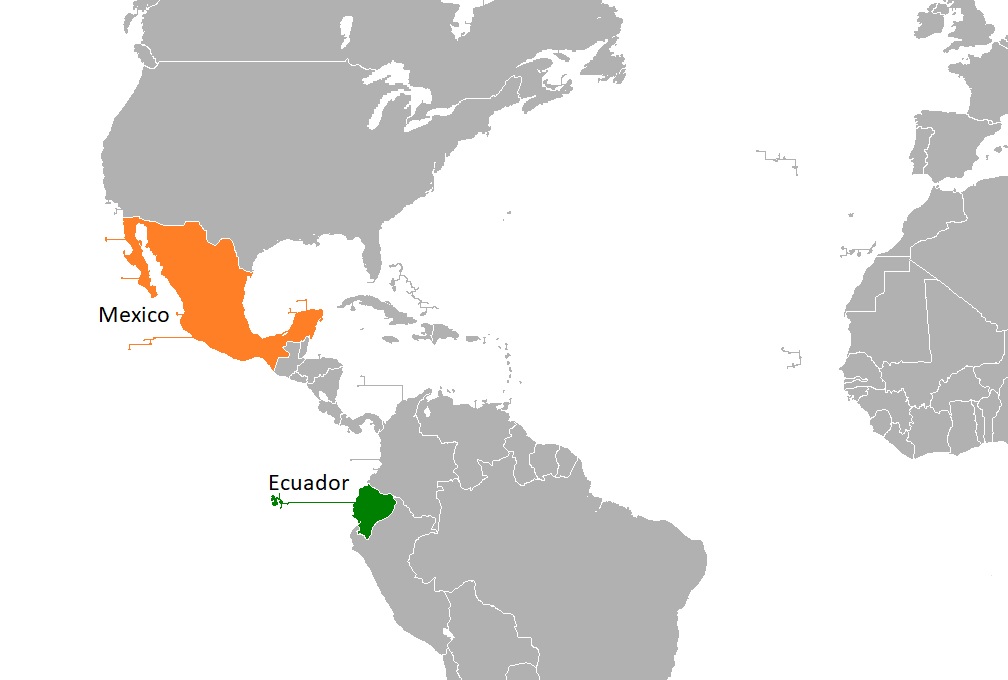Although the first indications date back to the 1930s, a recent archaeological study confirmed the suspicion: the pre-Hispanic Jama-Coaque culture, developed on the coast of Ecuador, maintained direct maritime contacts with Colima, in the northern Pacific of Mexico, long before the Spanish conquest.
Coincident attributes in ceramic pieces and odontological applications in skulls found in archaeological sites in Mexico and Ecuador make up a study that leaves no doubt about this maritime integration that took place between 300 and 800 A.D., that is, from 700 to 1,200 years before the conquest.
The study published by the Dumbarton Oaks Museum in Washington, D.C., is the result of research by U.S. archaeologist James Zeidler, who has conducted excavations in various parts of the Jama River basin (Ecuador), and his Mexican colleague José Beltrán Medina, with findings in the bay of Manzanillo (Mexico).

INTEGRATED BY CHOCOLATE AND SPONDYLUS
This research also explains why the Spaniards in Mexico marveled at “xocolatl” (chocolate in Nahuatl), known as “the drink of the gods”, domesticated 5,000 years ago in the Ecuadorian Amazon region and widely spread in the Aztec orb.
It is also from the first accounts of the Indies when the conquistadors described enormous rafts and sailing ships that plied the Pacific routes with large quantities of merchandise and people.
Likewise, the recognition of the value and status of the possession of spondylus and strombus shells in both cultures, as well as the use of the barbiquejo, a garment that holds the head and jaw of sailors and divers, represented in small clay figures found in archaeological sites.
The asiento-platón, a decorated and solid ceramic stool, and the compotera with a pedestal base are other findings of a way of molding clay that seems to have gone from Jama to Manzanillo.
COCA LEAF IN NORTHERN MEXICO
However, one of the most common utensils found in Colima was the coquero, a small vessel to hold lime, which, when mixed with coca leaves, better extracts the alkaloid from the plant, traditional and sacred to Andean cultures.
This type of coquero was widely found on the Tesoro beach in Manzanillo, suggesting the consumption of coca, a plant not native to Mexico but also widespread in that territory.
Possibly the coca leaf was introduced into Mexico by rafters from Jama or its neighboring town of Salango, where this pottery has also been found, Zeidler said in an interview with Efe.
The curious thing, said the researcher, is that the finding was located in the “human burials” surroundings, which suggests common cultural elements between the two regions.
PRESTIGE PRODUCTS
This exchange, according to Zeidler, can be explained under the concept of cultural alterity, that is, the interest in getting something considered foreign and from other lands, as far away as possible, to acquire more prestige.
“Otherness is the foundation of authority,” which is why these exchanges involve goods considered sacred and powerful, such as the spondylus shell and cocoa, which traveled from Palanda (in the Ecuadorian Amazon), where the earliest age of chocolate has been found, to Mesoamerica.
For Zeidler, the project should continue with more in-depth genetic studies to determine whether there were genomic relationships between the two cultures.
For the project’s cultural coordinator, Ecuadorian Patricio Tamariz, the study also represents an opportunity to develop archaeological tourism with sites like Jama, where history has begun to reveal itself, and to turn Ecuador’s central coast into an “international destination” for its astonishing historical, natural, and human wealth.
Precisely, the mayor of the municipality of Jama, Rober Castro, has confirmed his interest in expanding and modernizing the archaeological museum of his city, which will house Zeidler’s discovery, especially the infinity of ceramic figures that portray the ancient sailors who arrived in Mexico.
IN SEARCH OF THE PRE-HISPANIC SHIPBUILDING INDUSTRY
Tamariz even announced the use of laser technology (LiDAR) to scrutinize the vegetation throughout the Jama River basin, of inexhaustible archaeological resources, where Zeidler has already reported 232 deposits and 110 ancient artificial mounds in studies sponsored by the National Institute of Cultural Heritage (INPC) and with funds from the National Science Foundation of the United States.
“We still have to go looking for the workshops where the large balsa boats were made” that allowed this fluid exchange and “maritime trade” between such distant regions, Zeidler added.
Gerardo Castro, director of the INPC’s “Hojas Jaboncillo” Research Center in the coastal province of Manabí, recalled that “the common cultural tide to the north of South America”, worked on by Ecuadorian historians in the last century, portrays “a diaspora” that has been documented with archaeological findings.
“These contributions of maritime contacts coincide with our scientific efforts to know the cultural heritage of these equatorial navigators,” Castro remarked.
With information from EFE

